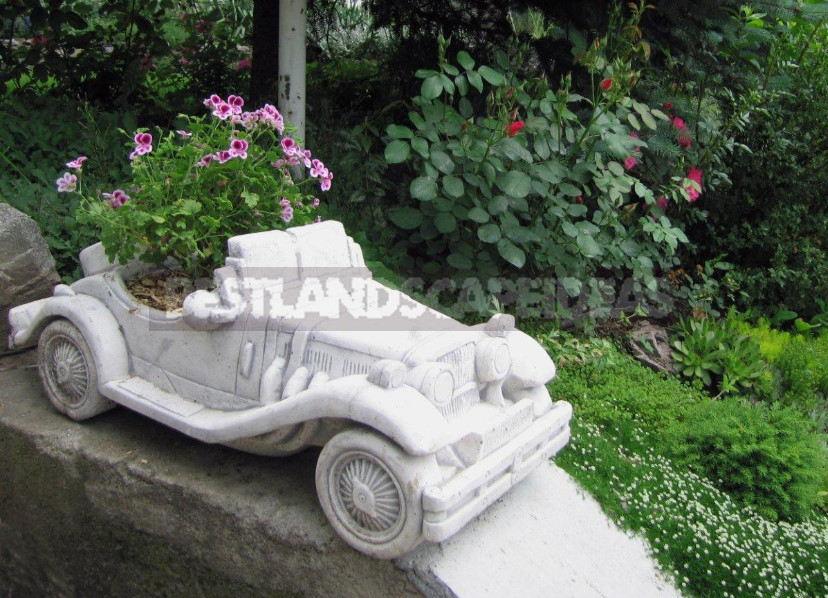
With the cultivation of plants in isolation from the surface of the earth is familiar to almost everyone. After all, almost all grow potted plants, and many planted annual flowers in balcony boxes and hanging containers. Today I will tell you about some design findings and technical solutions. Maybe something will be useful to you and for your garden.
Choose the container: important nuances about which you should know
In professional landscaping large durable containers made of concrete, plastic or metal are used. Ceramics or wood is more often used in the private garden. You can buy a ready-made tub, and you can make it yourself. It is also convenient to use inserts made of plastic pots, inserted into beautiful containers and filled with decorative mulch.

When buying a container, note: the better the thermal insulation of the walls, the less the roots of plants will suffer from overheating and drying of the soil. That is why a container made of ceramic or wood is preferable, a two-layer plastic is suitable, and a metal one is better not to be used in the sun.
Among the modern plastic products you can choose the so-called “containers with auto-watering”. At the bottom of the container is placed a container of water, which is a special capillary device rises to the roots of plants. Accordingly, the volume of water can be replenished rarely, as necessary, and do not have to be afraid of overflow substrate.
Placing containers in the garden and taking care of plants in them
Before filling the container with a substrate, it is necessary to take care of the drainage layer. By the way, it is easier to first make sure that the container is in the right place, and then fill and plant it. However, if necessary, a large container will be able to raise two men.

Any street containers look better in a group (from 2 to 5 pieces). Their height should correspond to the size. It is better if they are also in harmony with each other in height.
When making a container, keep an eye on the proportionality of its size with the location and size of plants. If you manage to group them into a successful composition, the effect will be higher. It is important that they differ in size, but coincide in design. To reduce overheating of the soil, use mulch. The area of the mulched surface will be minimal, so even the purchase of expensive material will not be burdensome.
How to organize watering
The main problem of keeping plants in containers is providing them with moisture. A small amount of substrate forces every day to water the planting. This issue is particularly acute for hanging baskets and pots.
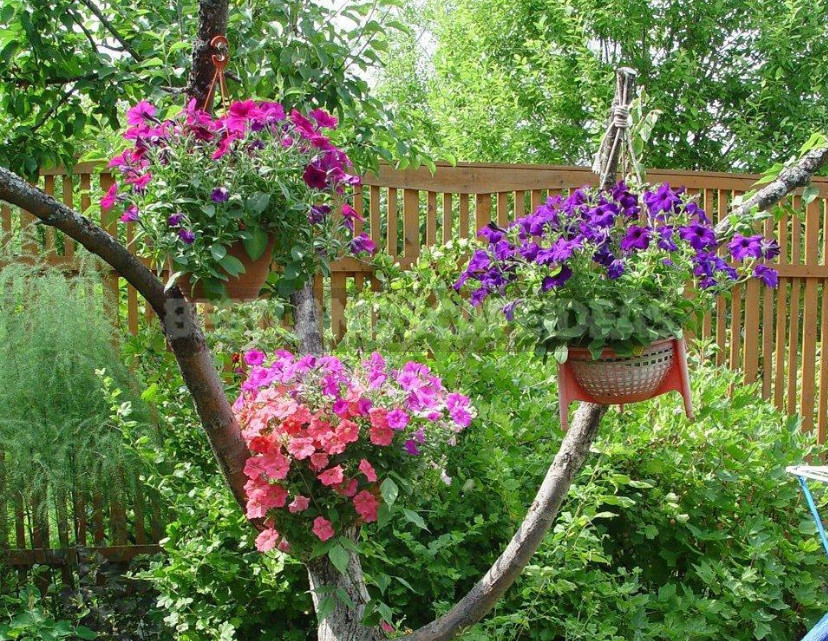
Radically solve the problem allows the installation of an automatic irrigation system. Ready-made complex systems for this purpose are offered by many companies. The simplest solution is the already mentioned vessel with a microporous capillary wick, through which moisture gradually and evenly penetrates into the ground. Due to the limited volume of water supply is only enough for a few days, but even this greatly simplifies the care.
A more advanced system consists of a micro pump with a timer and special droppers on thin tubes. This is a very convenient option when in need of watering plants that are close to home – on the balcony or terrace, porch or patio. Installation and connection of such systems is not difficult and does not require qualification, tap or socket and water tank – all that is required. Water from the pump in the tank comes through long tubes to the hanging basket or container where the dropper is installed. The elements of the system are easy enough to disguise.
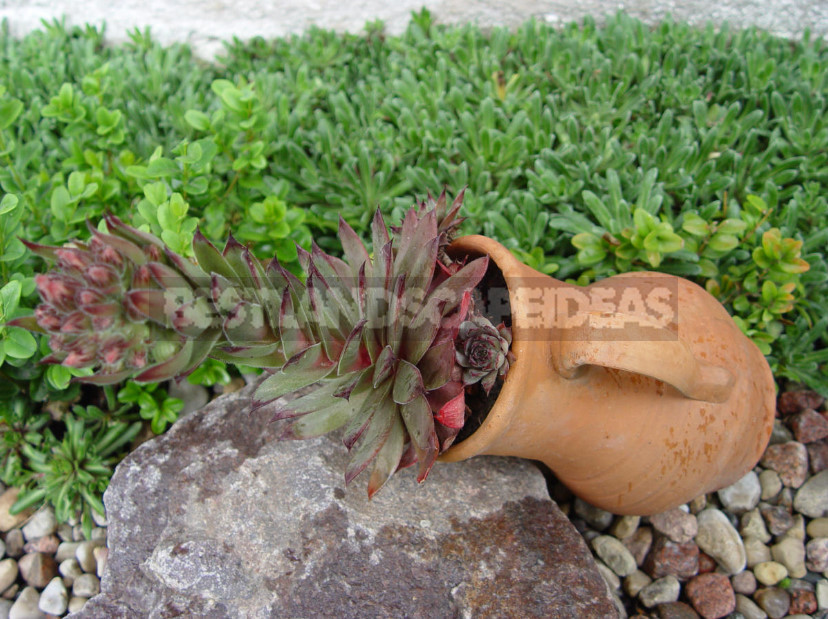
Serious reduction in the amount of irrigation-almost 2-3 times – allows the enrichment of the substrate with hydrogel granules. This inert chemical polymer is able to hold a huge amount of water. Approximately 1 gram of hydrogel absorbs 1 liter of water. Use already saturated with water (can be diluted fertilizers) hydrogel granules. To do this, a measured amount of liquid is poured dry hydrogel and wait (usually a few hours) until the material becomes completely transparent. According to the recommendations, it is added within 10% of the substrate volume.
Soil for container plants
The next important question is the composition of the soil for planting. When it comes to container gardens, the soil is often called a substrate, because it should be radically different from the garden soil. The basis of the substrate is a mixture of top and lowland peat, which has a high moisture capacity, lightness and good structure. These qualities allow the use of a minimum amount of substrate, which is a decisive factor.
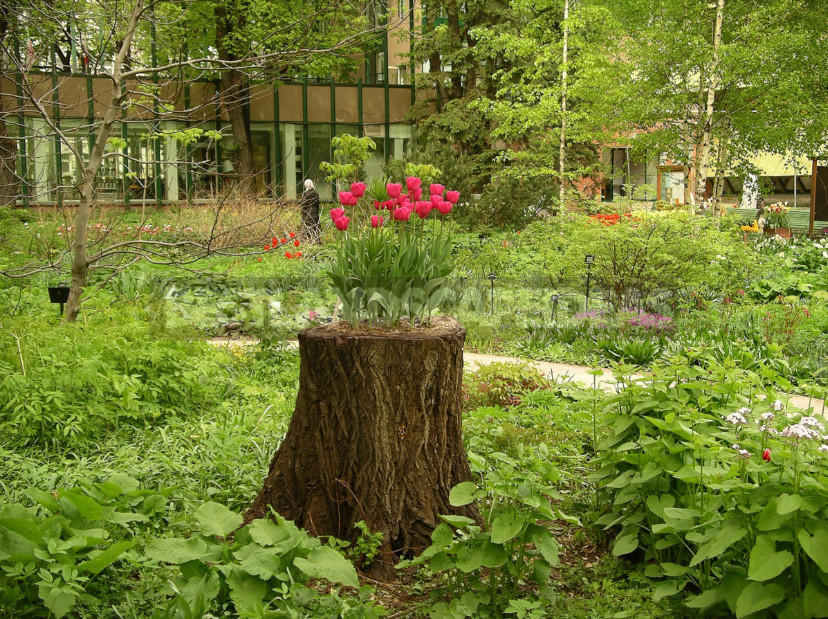
To improve the properties of peat, poorly absorbing moisture during drying, it is added to perlite or vermiculite. They perfectly retain water themselves, can easily give up and type it again. For the same purpose can be used and expanded clay chips, and before the mixture was added to the ground sheet.
The third prerequisite – a high ratio of nutritional elements. To do this, the peat base is saturated with water-soluble fertilizers and in addition, granules of slow-acting fertilizers with a high content of both macro and microelements are introduced.

To improve the nutrition of plants, you can also make high-quality rotted compost or vermicompost. But because of the small volume of the substrate most actively growing annual flowers. When using specialized liquid fertilizers, they can be successfully combined with watering.
How to make a wooden tub
In the pharmacy garden, we successfully use homemade tubs. They are square, with a side of about 60 cm height tubs-40-60 cm, depending on the width of the boards. Just need a couple of boards of 6 m and a bar about 3 m long, a hundred screws, a liter of “Pinotex”, a screwdriver and a saw.
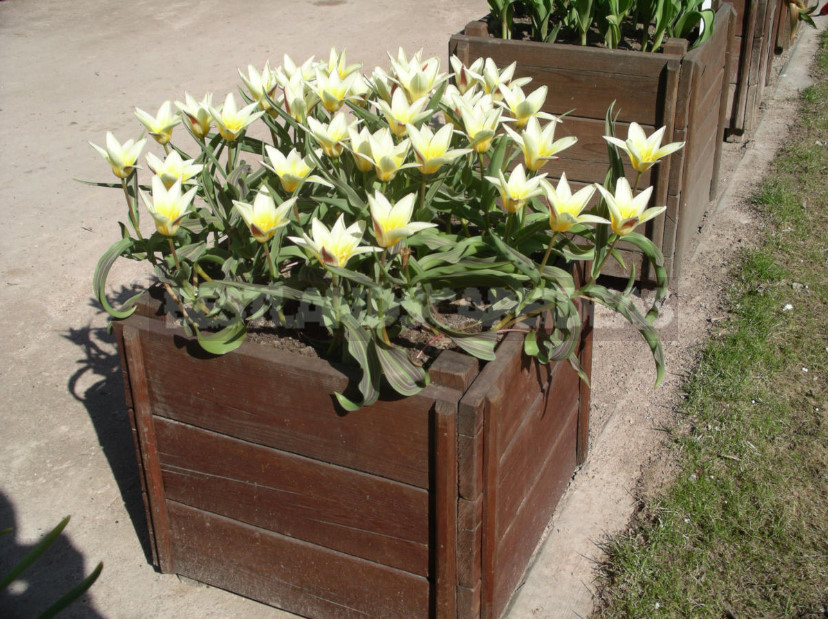
Usually the wall consists of four segments. First, 12-16 planed blanks are cut (at the rate of 3 or 4 pieces on each side). 25-30 mm thick material is used. To facilitate the work in the stack of boards it is necessary to drill holes with a diameter of 3 mm for the screws. They need to mark 4 places on the corners of the workpiece at the distance of half the Board thickness from the edge.
Arrange the boards 3 (4) pieces in a row like a wall. Now you can pick up the corner bars, which should be a few inches longer than the wall to the protruding parts formed legs. From the bar section of 50 mm cut 4 pieces-and the workpiece is ready. Still needed two racks and a few scraps of boards for the manufacture of bottom and additionally 8 decorative slats-lining in the height of the wall (they can be saw from scraps of the Board).
Prepared lumber is sanded and directly painted decorative (protective) treatment for wood.
Now you can assemble the structure. For this you will need screws with a length of 50-60 mm, better anodized. On the bench or just a flat surface are placed two bars. They are stacked across the Board to the wall. Protruding segments of the bars are the legs. The ends of the boards on the one side is placed flush with the surface of the bar, with another Board placed under the prepared rack to place the bar on the distance of the thickness of the Board from the ends. The screws spin in the holes provided. Just connect the second wall.
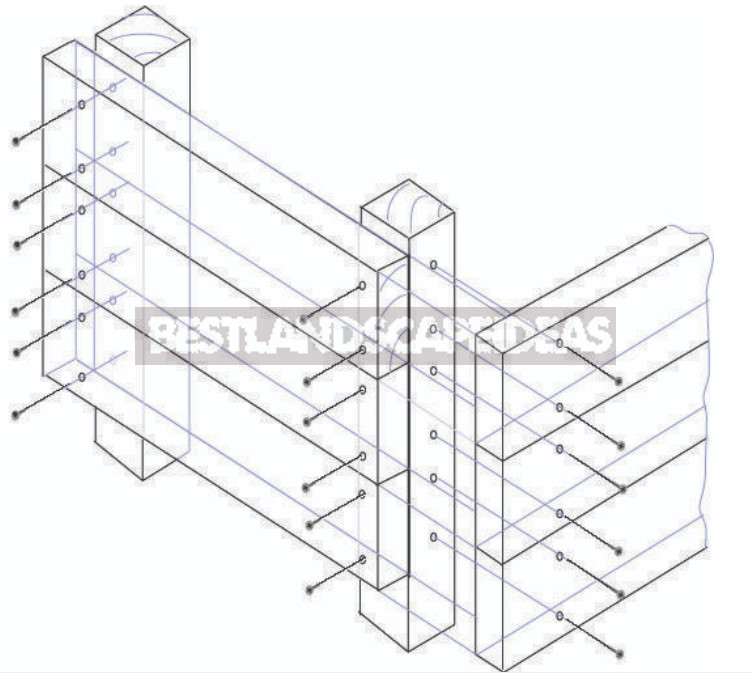
Now you need to take care of the installation of the bottom. The thickness of the earth in a tub can make 30-40 cm, we add 5 cm of sides and a thickness of a Board. Measure this value from the top of the tub on its inner surface. Fasten on both walls on the rail for the bottom. The length of screws should be less (for example, 40 mm) that from the front side did not get out their edges.
Then two planes are interconnected by stacking the remaining boards and tightly clutching one edge of the formed step. After assembling the walls, you can correct the irregularities at the ends of the plane or rasp. Head screws lockable with decorative moldings. Put the tub and lay the bottom of the remaining scraps, stacked on fixed inside the rack. It is necessary to leave gaps between them for a drain of water or to drill apertures.
Plants for containers
Of course, more than any other suitable annual flowers, beautiful all summer. However, if desired, so you can grow and perennials, and even shrubs.
In your own garden, the choice of plants can be much wider. It all depends on the location and purpose. To design a patio using varieties with luxurious flowers or a pleasant aroma.
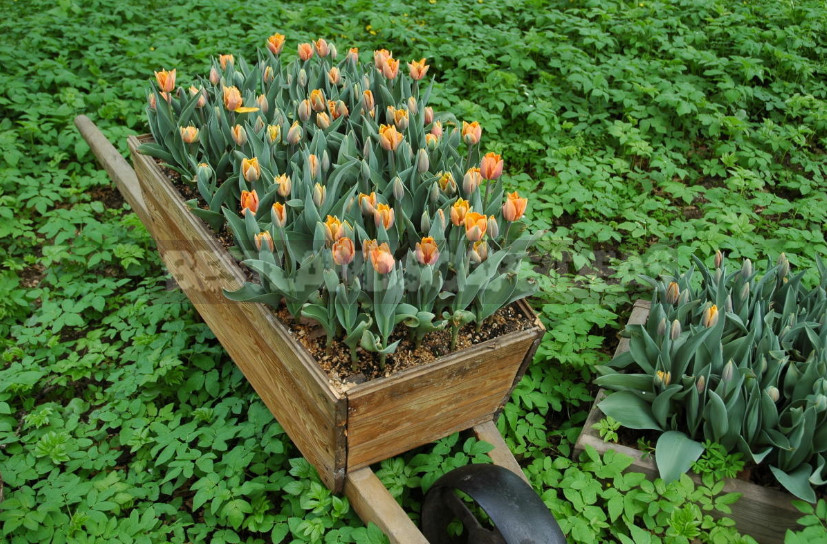
In partial shade ideal for tuberous begonias and Impatiens, Lobelia, fuchsia, antirrhinum and sweet tobacco. The edges of such a container is well decorated with plectrantus and ivy, Lobelia or nasturtium. In one container can accommodate up to five different types, and you can do one — it all depends on your desire.
It is very interesting to land in a container vines. Here they will get more sun and heat, protection from slugs and waterlogging. Try installing a simple support in the form of hut made of rails or the cylinder of mesh and fire to grow beans, sweet peas, dolichos, morning glory, and climbing nasturtium.
Often, to maintain the balance of the composition is required to plant tall plants. As verticals are used Kochia and Cosmos in the shade — tobacco forest, Cleome, Malva sylvestris. Good at it as the ornamental grasses. Well realistically to place so Cordyline or Dracaena, Yucca.
Properly selected containers, a suitable place for them and regular care of plants — these are perhaps the main secrets of a beautiful container flower garden.

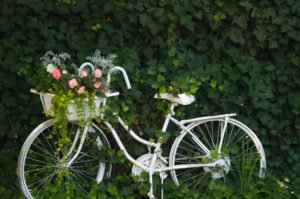


Leave a Reply